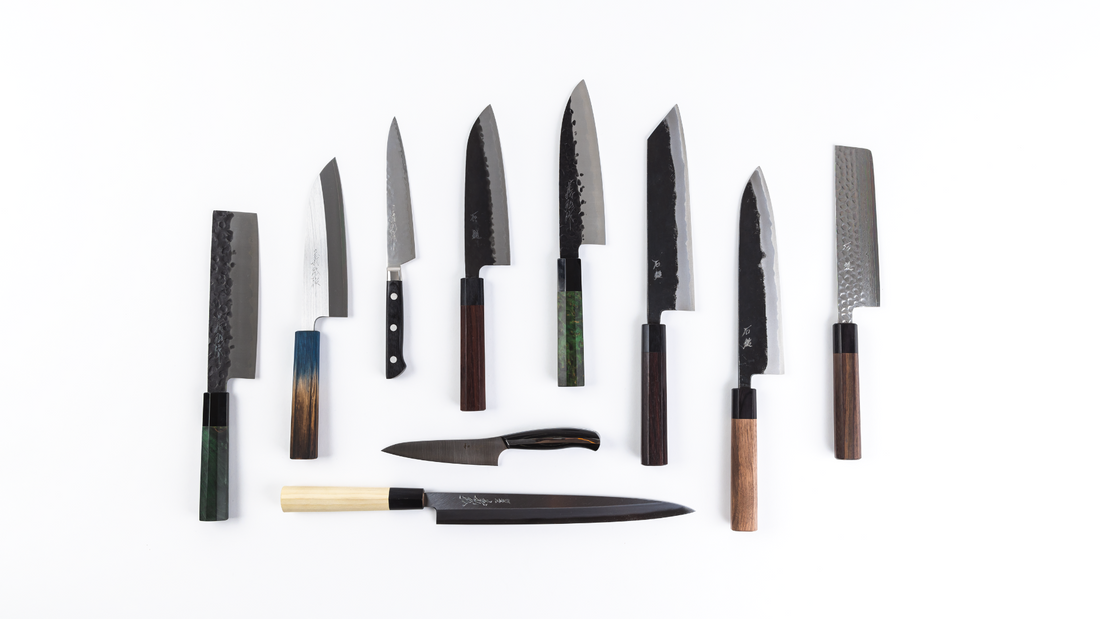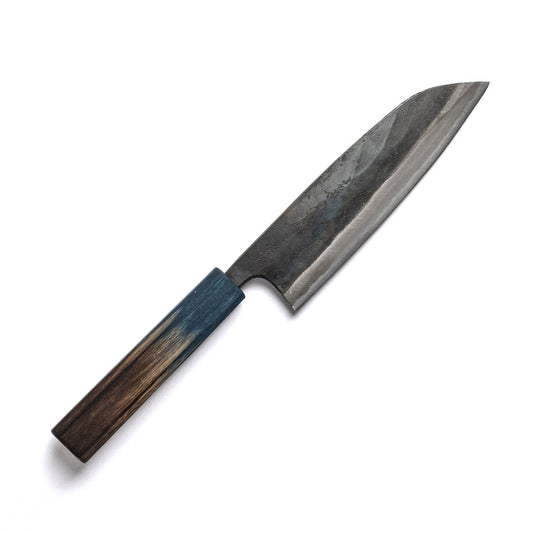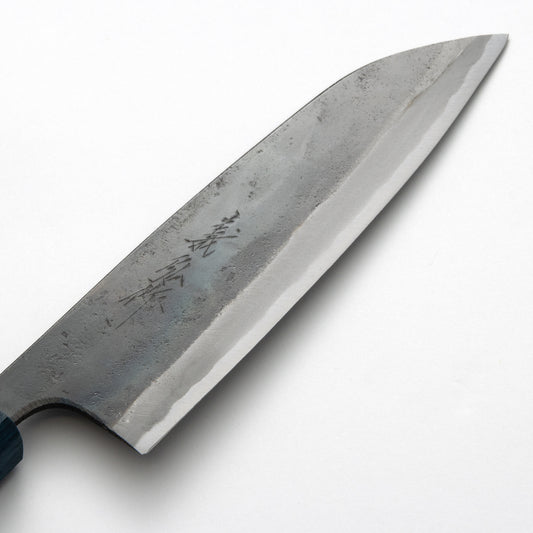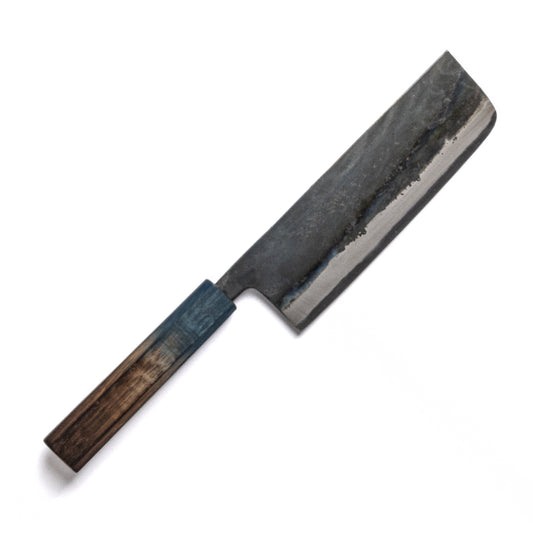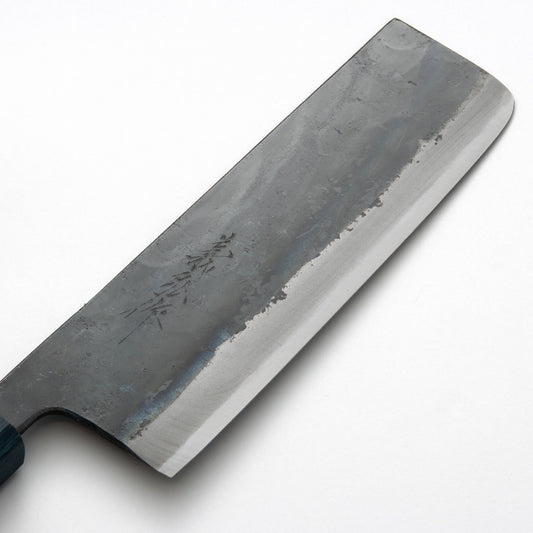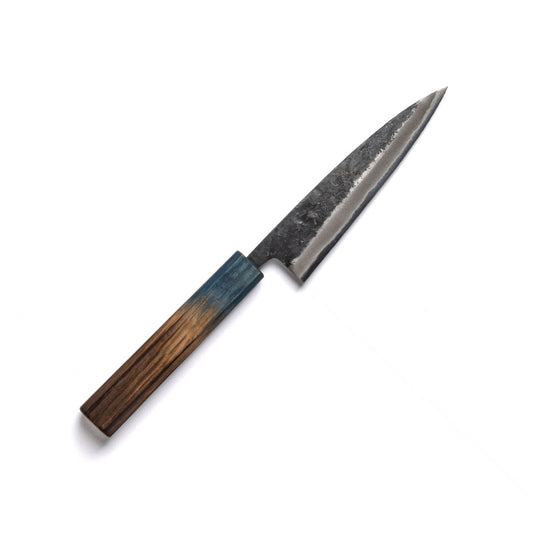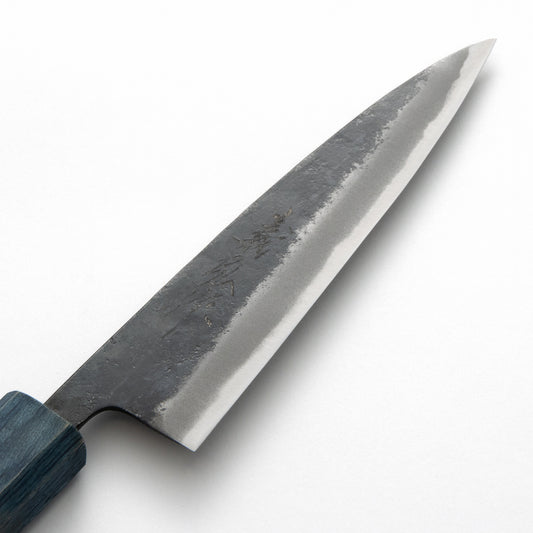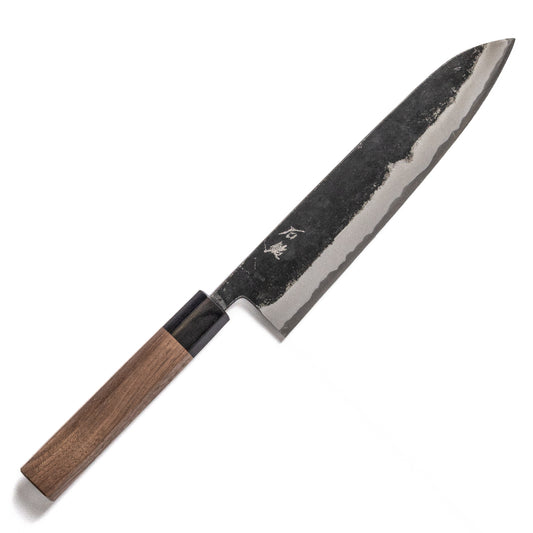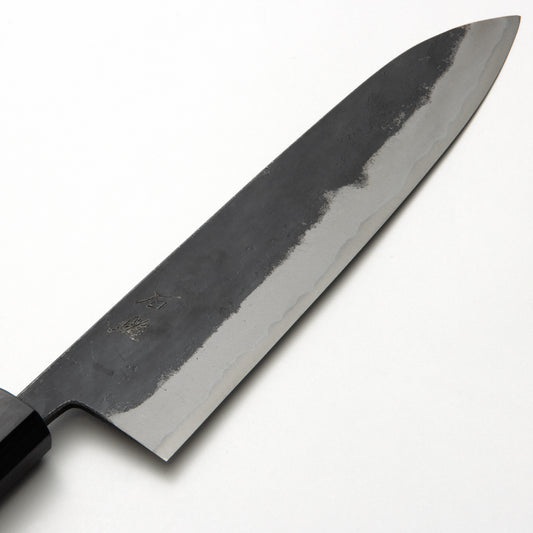Come with us as we discover the captivating world of Japanese knives, delving into their rich diversity, unveiling their exquisite designs and specialized functions. From the renowned Santoku and Gyuto knives to the intricate Nakiri and Yanagiba knives, each blade showcases the mastery of centuries-old craftsmanship, meticulously tailored for specific culinary tasks.
Whether you're a professional chef or a passionate home cook, join us on this journey to unravel the secrets behind Japanese knives, and experience their unparalleled utility and the perfect harmony between form and function.
Contents
- Different Types of Japanese Knives
- Common Types of Steel
- Choosing the Right Japanese Knife for Every Task
- In Conclusion
Different Types of Japanese Knives

First let's embark on a fascinating exploration of the various types of Japanese knives, where we'll discover a diverse array of blades meticulously crafted for specific culinary purposes. From the versatile Santoku knife to the precise Yanagiba, we'll delve into the distinctive designs and functionalities that transform each knife into an essential instrument for both professional chefs and home cooks.
Chef (Gyuto) Knives
The Gyuto knife, a Japanese response to the Western chef's knife, is a true kitchen powerhouse. Its versatile design allows for a wide range of cutting techniques, effortlessly blending precision and power. Whether you're a professional chef or a home cook, the Gyuto is an indispensable companion in the culinary world.
Explore our collection of Chef knives here.
Santoku Knives
Discover the incredible adaptability of the Santoku knife, known as the "three virtues" due to its exceptional slicing, dicing, and chopping abilities. With its unique shorter and wider blade, the Santoku effortlessly tackles a wide range of kitchen tasks, making it the go-to choice for anyone in search of a versatile, all-purpose knife.
Explore our collection of Santoku knives here.
Nakiri Knives
When it comes to the realm of vegetable preparation, no knife can match the Nakiri's supremacy. With its straight edge and squared tip, this culinary gem effortlessly achieves precise slicing and dicing. Immerse yourself in the beauty and functionality of this dedicated vegetable knife, a beloved tool in Japanese kitchens.
Explore our collection of Nakiri knives here.
Kiritsuke Knives
Prepare to be amazed by the seamless fusion of the Usuba and Yanagiba knives in the magnificent Kiritsuke. This exceptional blade combines the best of both worlds, featuring the flatness of an Usuba and the pointed tip of a Yanagiba. With the Kiritsuke, you'll have the ultimate tool for effortlessly slicing and chopping.
Explore our collection of Kiritsuke knives here.
Petty (Utility) Knives
Get ready to meet the unsung hero of the kitchen - the Petty knife. Don't let its small size fool you, as this knife excels in tackling intricate tasks like peeling, trimming, and precise slicing. With its nimble nature, it becomes an irreplaceable companion for delicate work, effortlessly adding finesse and elegance to your culinary creations.
Explore our collection of Petty knives here.
Yanagiba Knives
Next lets step into the world of culinary finesse with the Yanagiba knife, expertly engineered for the delicate artistry of sashimi and sushi preparation. This remarkable knife boasts a slender, single-edged blade that effortlessly delivers clean, precise cuts, enabling chefs to showcase their expertise in crafting visually captivating dishes.
Explore our collection of Yanagiba knives here.
Other Japanese Knives

Beyond the well-known Japanese knives, there exists a multitude of lesser-known options. From the versatile Bunka to the specialized Deba, this section unveils a diverse collection of knives, each meticulously crafted for specific culinary endeavors.
Common Types of Steel

Now, let's take a deep dive into the fascinating world of Japanese knives and discover the incredible metallurgical techniques used in their meticulous craftsmanship. From the incredible strength of Damascus steel to the impressive stain-resistant properties of VG-10, we will unveil the hidden secrets that contribute to the exceptional sharpness, durability, and overall performance of these remarkable blades.
High Carbon Stainless Steel (e.g., VG-10)

When it comes to outstanding edge retention and the ability to withstand corrosion, VG-10 steel stands in a league of its own. Japanese knives crafted with this remarkable material offer an impeccable blend of carbon content, durability, and sharpness. It's no wonder that chefs who seek nothing but precision in their craft have developed a deep fondness for VG-10.
Blue Steel (Aogami)

The exceptional Aogami, famously called Blue Steel, is celebrated for its extraordinary sharpness and remarkable edge retention. Fashioned from a meticulous fusion of iron, carbon, and tungsten, Aogami steel imparts a one-of-a-kind blue shade to the knife. Embrace the artistry and dedication behind the creation of blades with Aogami, a cherished steel type sought after by those who crave the pinnacle of sharpness.
Damascus Steel
The art of crafting Damascus steel, an ancient forging technique, entails skillfully stacking numerous layers of steel to create mesmerizing patterns that resemble the graceful flow of water. This exceptional metalwork not only captivates with its beauty but also combines the perfect balance of sharpness and durability, producing knives that are both visually stunning and highly efficient.
Tsuchime Steel
Tsuchime knives, named after the unique hammering technique that creates a mesmerizing pattern on the blade, perfectly blend visual allure with practicality. Dive into the world of this traditional craftsmanship, which not only enhances the aesthetic appeal but also elevates the performance of Japanese knives.
Other Steel Types

Japanese knives are not limited to the well-known steel varieties. In fact, there is a vast array of other steel types that add to the captivating tapestry of these knives. From the robust and durable Honyaki to the effortlessly maintainable Ginsan, these lesser-known steels are essential in shaping the diverse landscape of Japanese cutlery.
Choosing the Right Japanese Knife for Every Task

Navigating the world of Japanese knives can be overwhelming, but don’t worry. In this section, we guide you through the process of choosing the perfect knife for every culinary endeavor. Whether it's the precision required for delicate slicing or the robustness needed for chopping, learn how to match the right Japanese knife to the task at hand.
Chopping, Slicing and Dicing

The Santoku knife is perfect for effortlessly slicing, dicing, and chopping with precision. This versatile blade is designed to handle a wide array of kitchen tasks, making it an essential tool in any culinary arsenal. Similarly, the Japanese Gyuto or Chef knife is a powerhouse in the kitchen, excelling at tasks such as chopping, slicing, and dicing.
With its exceptional versatility, it's no wonder that both knives are highly regarded by chefs worldwide.
Precision Cuts

For those seeking to slice raw fish thinly for sushi and sashimi, the Yanagiba or Sashimi knife is the perfect tool. Its long, single-edged blade guarantees clean and precise cuts. If you're more inclined towards chopping and slicing vegetables, we highly recommend the Nakiri knife. Its thin and rectangular blade enables accurate cuts and efficient chopping.
When it comes to tasks that demand utmost precision, the Petty (Utility) knife is your go-to. This smaller multipurpose knife is ideal for those intricate tasks that require more precision than a larger chef's knife.
Multipurpose Knives

With the Kiritsuke knife, you get the best of both worlds - the functionality of a chef's knife and a vegetable knife. This makes it an incredibly versatile tool that can handle a wide range of kitchen tasks.
Additionally, it's worth noting that the Kiritsuke knife is also adept at precision work, making it an ideal choice for those who value attention to detail. Furthermore, its compact size and multipurpose functionality make the Petty Knife an excellent option for anyone with limited kitchen tools.
Of course, all Japanese knives benefit greatly from general care and maintenance. If you'd like to learn more about how to take care of these stunning kitchen tools then please check out our other comprehensive blog on tips for knife care here.
In Conclusion
As we conclude this exploration into the realm of Japanese knives, we celebrate the fusion of artistry and functionality that defines these culinary companions.
From unraveling the intricate designs to admiring the expert craftsmanship, we trust that this adventure has equipped you with the knowledge and confidence to skillfully handle these blades, elevating your culinary endeavors with each precise cut.


